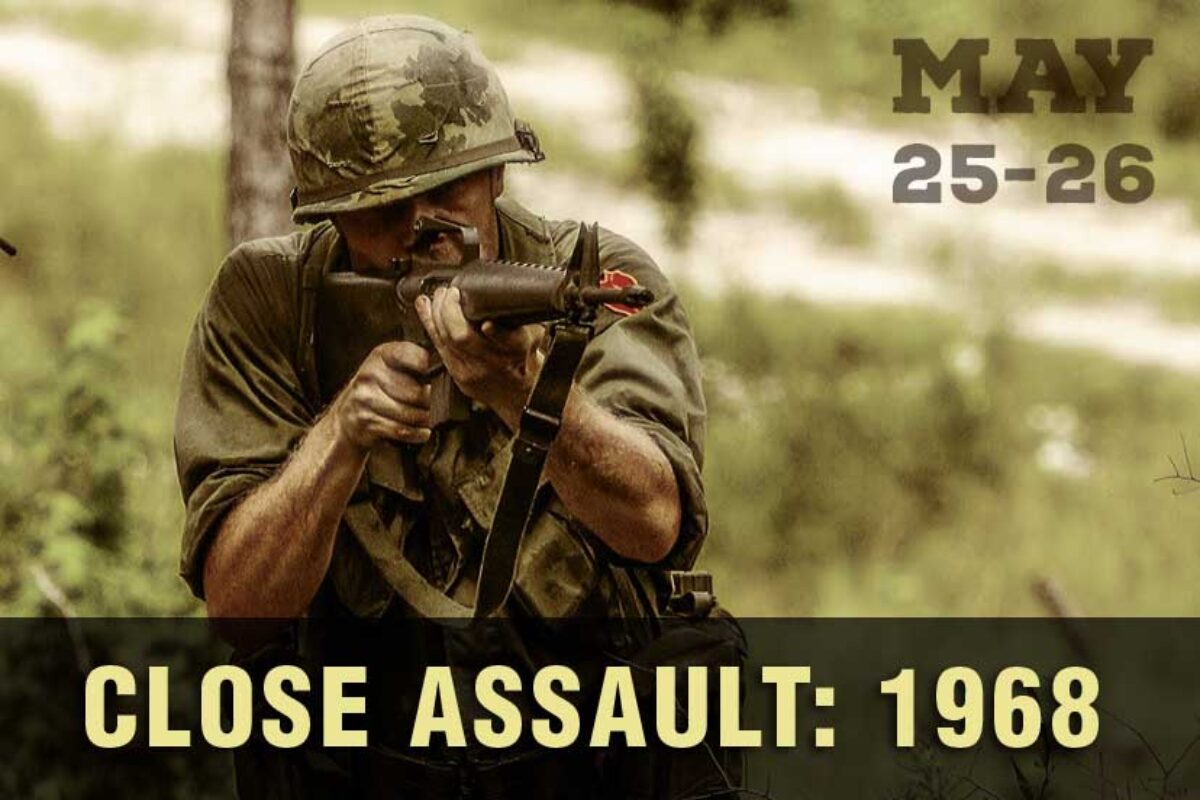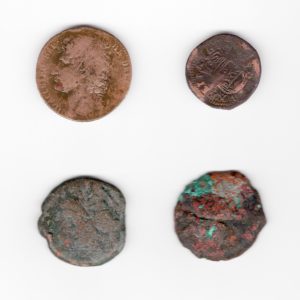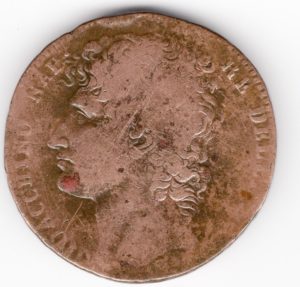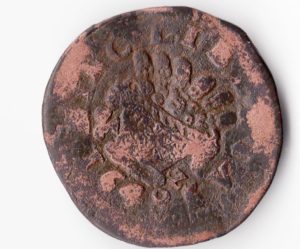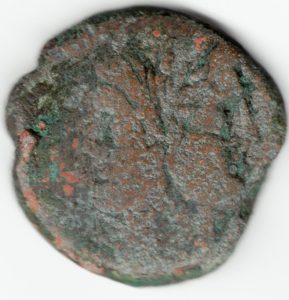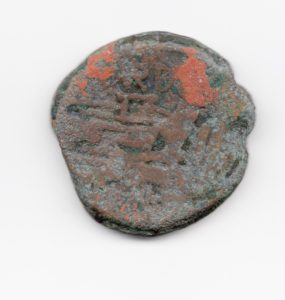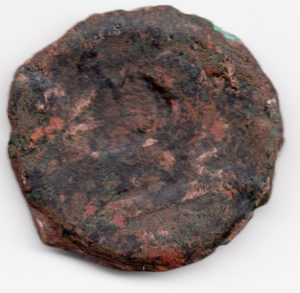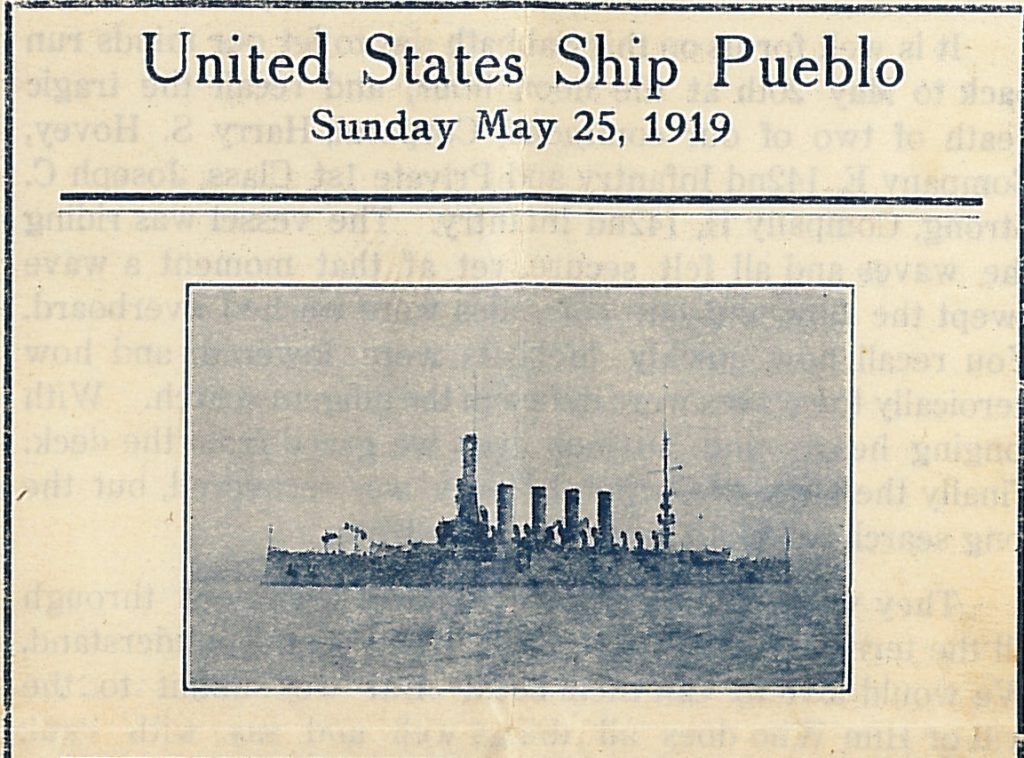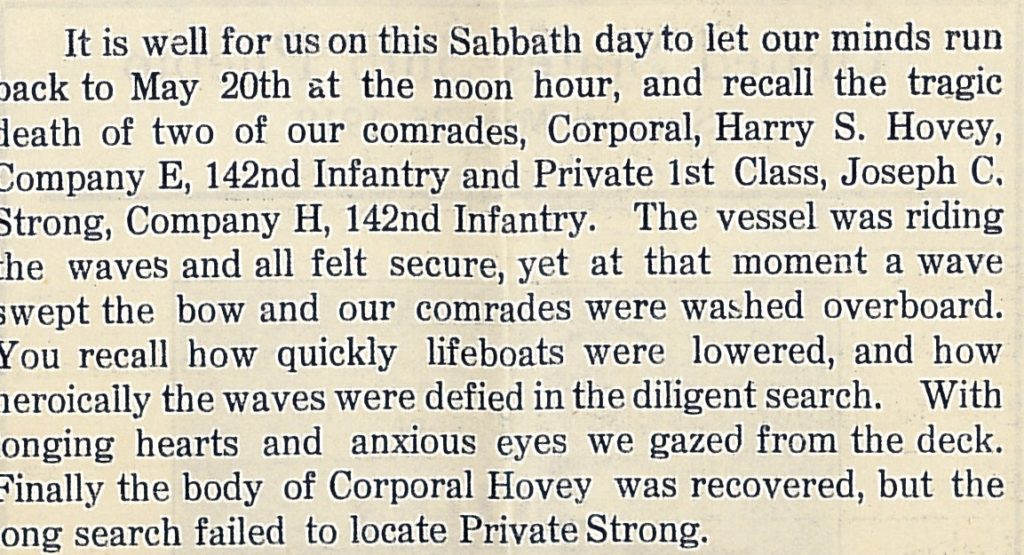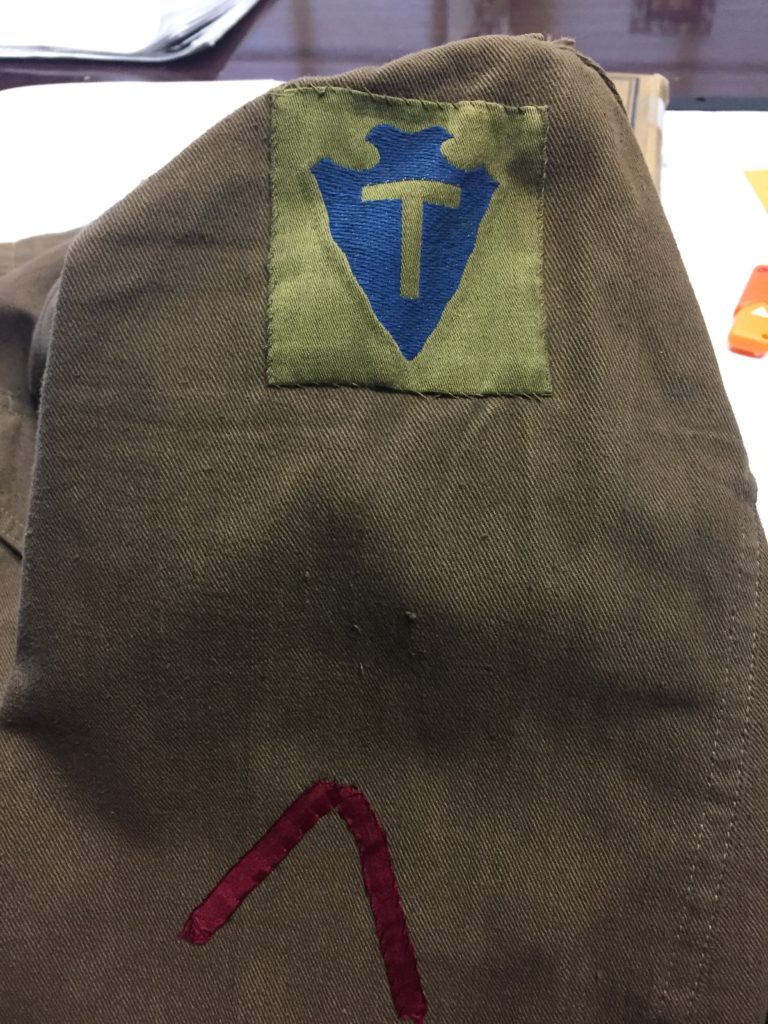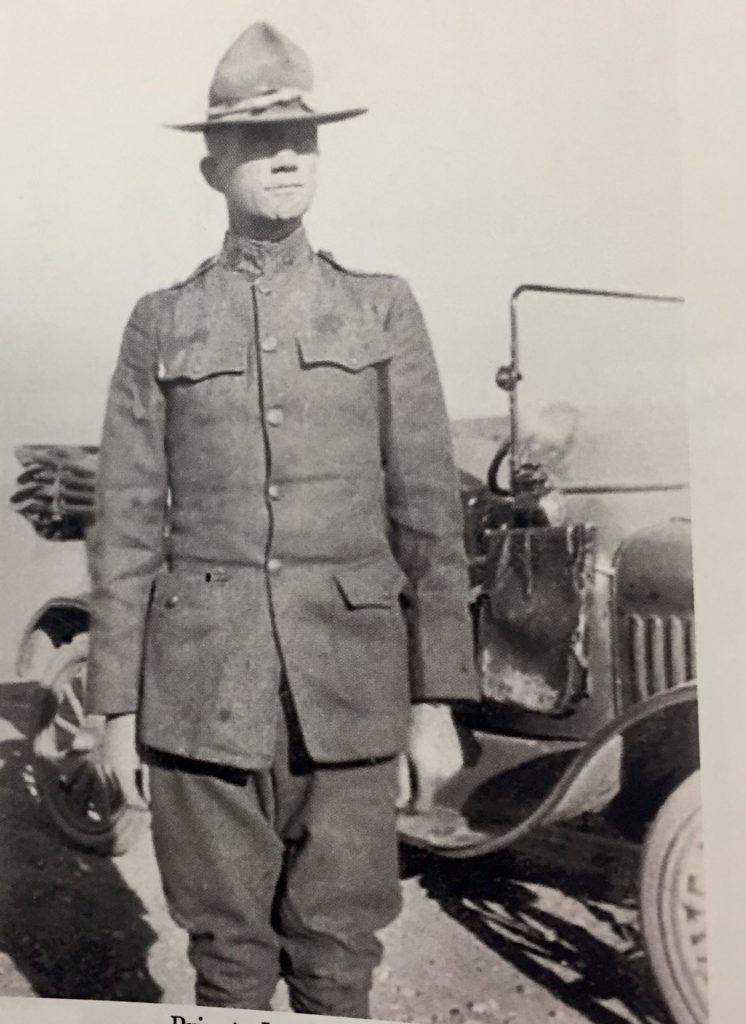This small collection of coins was donated in 2001 and is part of the current museum staff’s ongoing effort to catalog previously unrecorded artifacts in the museum collection. The coins only had a donation date and that they were associated with a 36th Infantry Division soldier but they still have an interesting story to tell.
The top left coin is a 3 Grana coin dated 1810 and came from Naples, Italy.
The top right coin is a 3 Tornesi coin dated 1648 and came from the Neapolitan Republic.
The 2 bottom coins are both variations of the same Roman Republic coin and date from 200-100 BCE.
The front of the coins have Janus, the two faced god for whom January is named.
The back of the coins have a prow of a ship and this one has the visible letters ‘RD”, possibly for TVRD. The coin is a very thick bronze, 40mm. The other Roman Republic coin appears to be all copper.
The 3 older coins all have wear consistent with being buried. While we don’t know the exact story of these coins it is easy to image a 36th soldier resting in a field after the difficult landings at Salerno on September 9th 1943 and seeing something glint in the sunlight and picking up the 3 grana coin. Or during the long, wet winter of 1943/44 our soldier is digging a foxhole, trying to get a little cover from the constant artillery bombardment and finding one of the Roman coins buried in the dirt.
We don’t know why the soldier chose to keep these old coins; possibly as souvenirs to send home to a kid brother or sister or maybe his own young child, or maybe as a memento for his own collection or a sweetheart or wife back home. Did he feel a connection to those long ago Italians who had lived and maybe fought and died on the same soil? Was he injured? Did he make it back home or were these part of the effects sent back to the family of a fallen soldier. We will likely never know the answers to these questions but we can imagine the soldier and see him in films like “A Walk in the Sun” or “The Story of G.I. Joe” both of which were based on the 36th Infantry Division in WWII and we can remember his service and sacrifice told through the objects he left behind.
